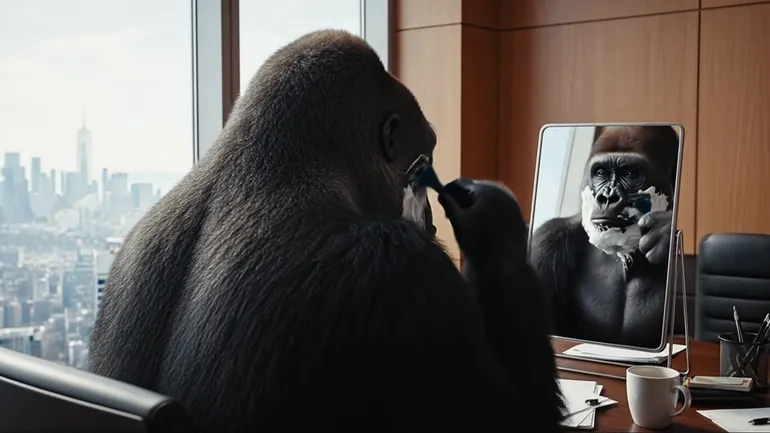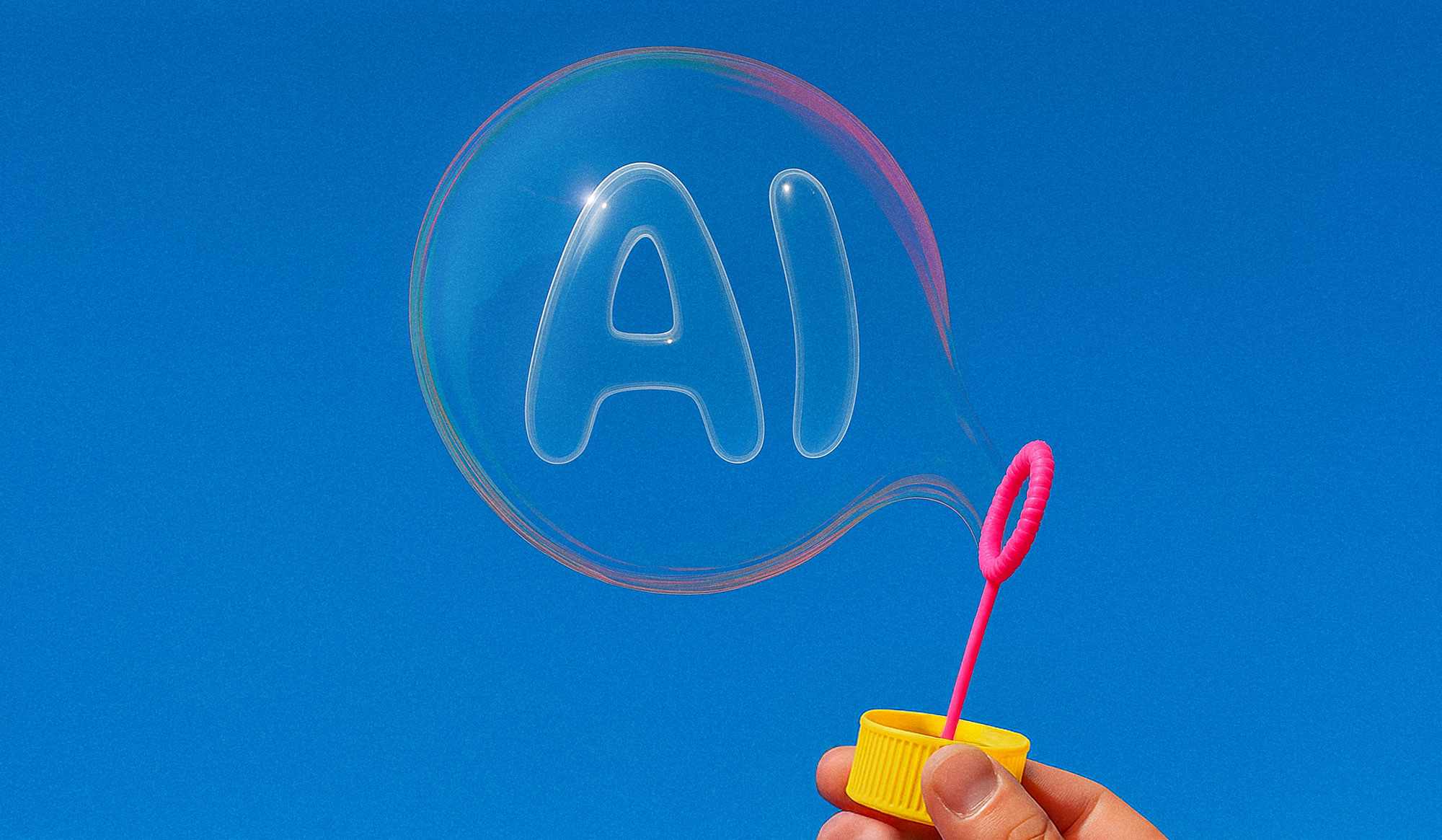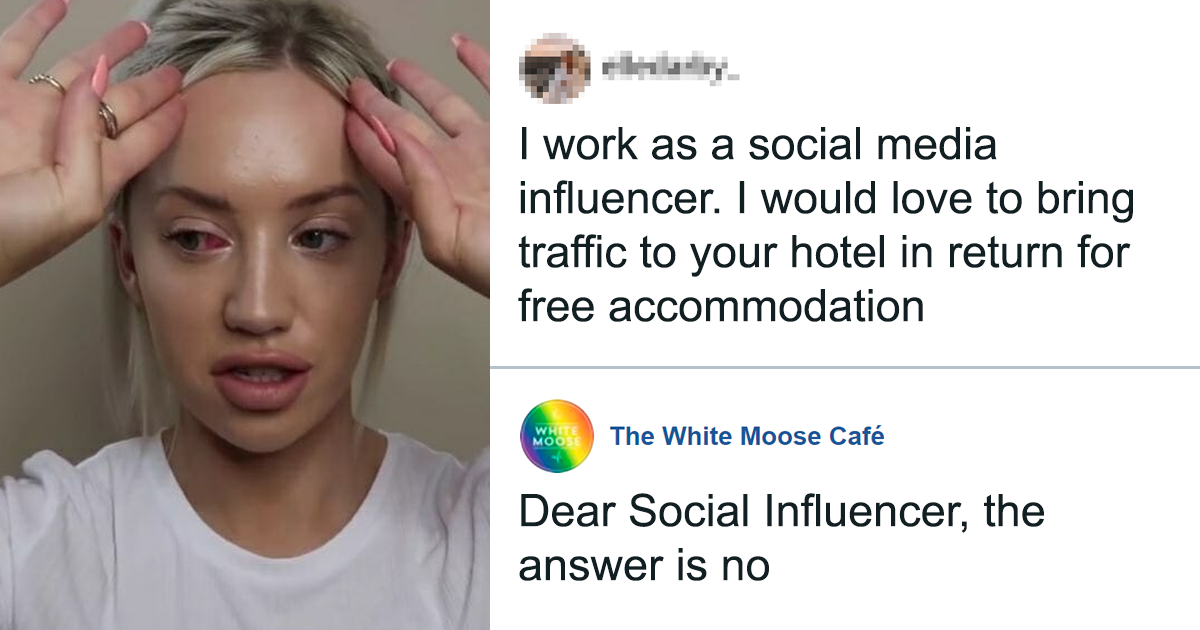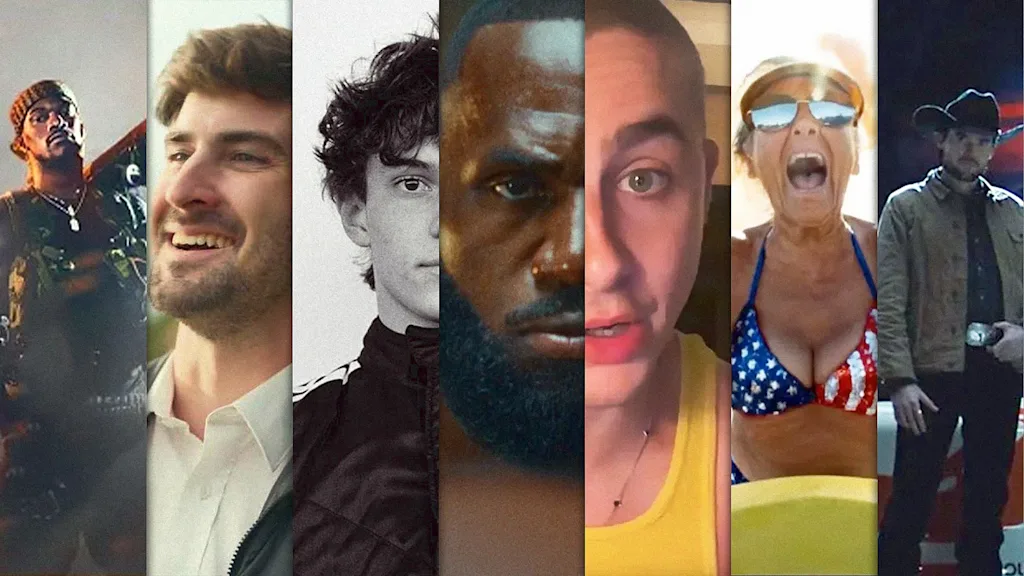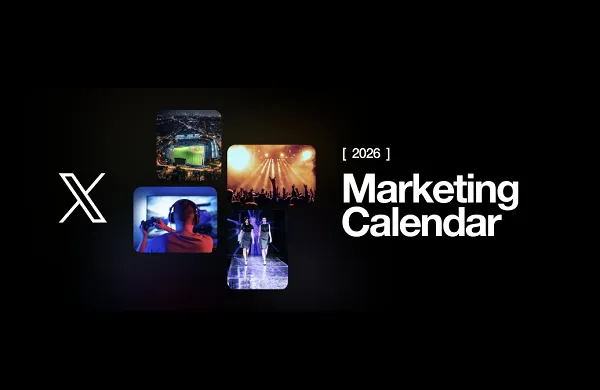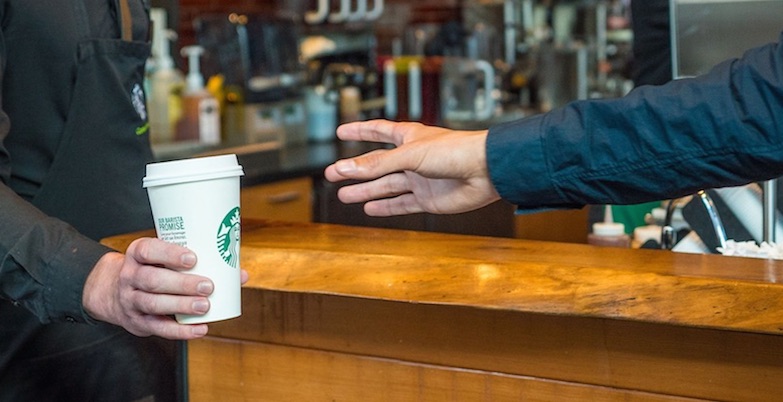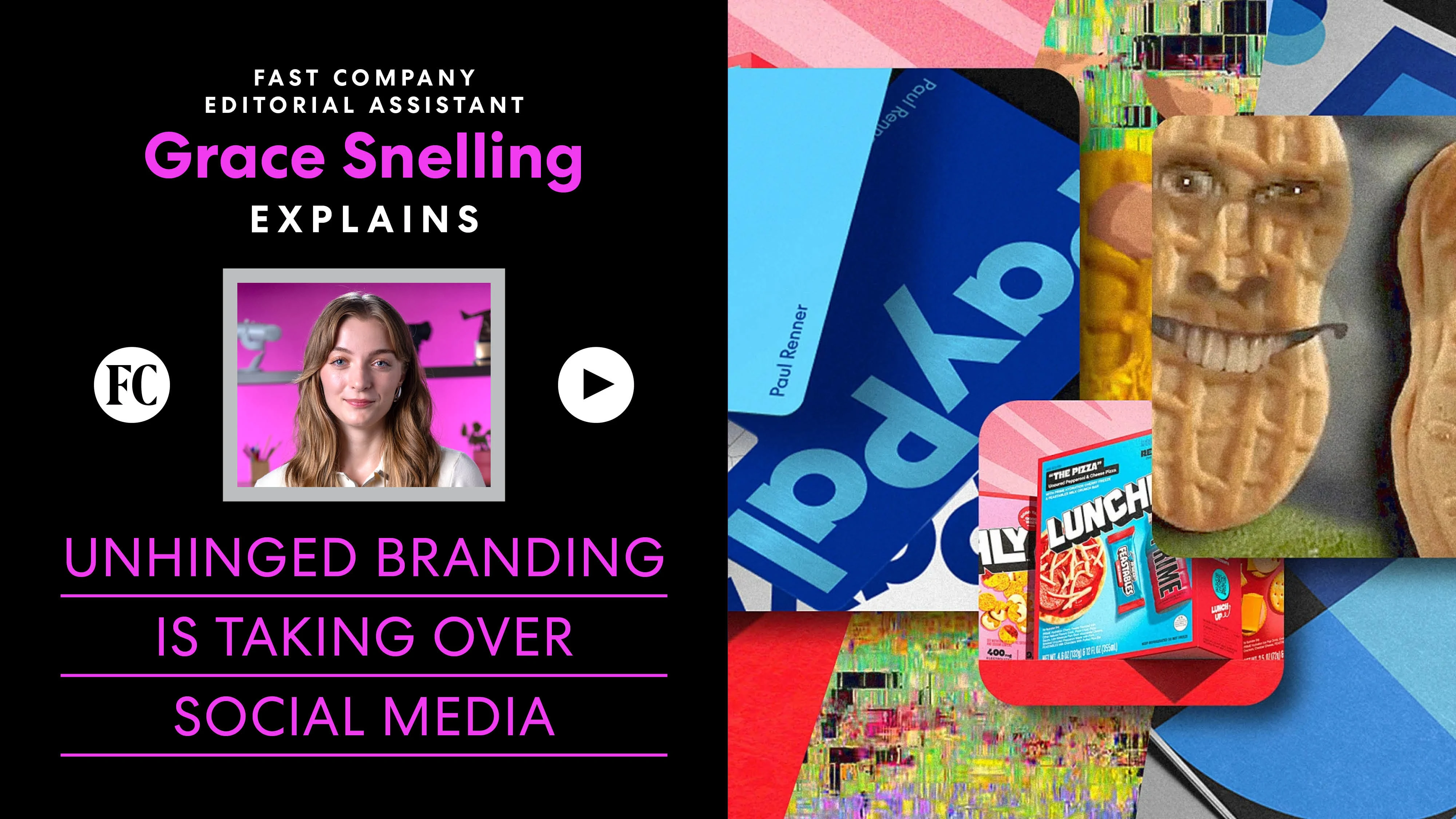Marketing
Marketing
[ follow ]
#influencer-marketing #social-media #customer-experience #brand-strategy #generative-ai #advertising #seo
fromFast Company
8 hours agoWhy brands need to stop treating sound as a backing track
The biggest brands pour creativity into being instantly recognizable. A logo you can spot at 20 paces. A color palette that becomes cultural shorthand (think Oreo blue or Coca-Cola red). That visual obsession runs through every corner of marketing. TV, social, out-of-home, retail, and packaging. Millions go into crafting imagery, with every frame revised until it perfectly reinforces the brand.
Marketing
fromInc
13 hours ago2026 Will Punish Lazy Email Marketing
With 93 percent of people checking their inboxes at least once a day, email is still one of the highest-ROI channels out there. But over the past few years, email marketing has become easier to do poorly. Artificial intelligence and automation have removed friction, but they've also made it easier to overlook the basics that mailbox providers now scrutinize more closely. Here are some of those basics, and the problems they bring.
Marketing
Marketing
fromLondon Business News | Londonlovesbusiness.com
1 day agoHow outsourced audit teams protect brand standards across national retail networks - London Business News | Londonlovesbusiness.com
Consistent, impartial retail auditing across stores and regions preserves brand reliability and customer confidence by ensuring repeatable operational standards.
Marketing
fromLondon Business News | Londonlovesbusiness.com
1 day agoHow small businesses can use landing pages to improve enquiry rates - London Business News | Londonlovesbusiness.com
A focused, fast-loading landing page with clear messaging and a single call-to-action maximizes enquiries and improves ad ROI.
fromSitePoint Forums | Web Development & Design Community
10 hours agoFree ways to improve domain authority (DA)
I'm looking for advice on free, long-term methods to improve Domain Authority for a content-focused website, without paid backlinks or link schemes. The site I'm working on is here for reference: http://whats-your-iq.com/ It's an informational platform around IQ testing, cognitive skills, and related educational content. The site already has: Original long-form articles Structured internal linking Clean technical setup (Core Web Vitals, mobile-first, indexing)
Marketing
fromBevindustry
1 day agoHOPWTR launches Drink Whatever You Want campaign
HOPWTR is kicking off its Drink Whatever You Want campaign, just as global curiosity peaks around the mysterious interstellar object 3i/ATLAS, which is currently making its way toward Earth. As headlines swirl about unidentified objects beneath U.S. waters and scientists debate whether 3i/ATLAS signals extraterrestrial life or just another space rock, HOPWTR is leaning directly into the moment with a simple message for consumers: drink whatever you want, because the aliens are coming anyway.
Marketing
fromPractical Ecommerce
1 day agoGSC Groups Keywords as AI Queries Expand
Google Search Console's "Insights" section no longer shows click trends for individual keywords. It now displays trends for keyword groups, once available only to high-traffic sites. Selecting any group of keywords takes you to the Performance section with the regex filter activated to show details. Many marketers believe the future of organic search monitoring is keyword groups. Consumers' queries are becoming longer and more diverse as they interact with genAI platforms such as ChatGPT and Google AI Mode. Hence tracking individual words is becoming ineffective.
Marketing
fromThe Drum
1 day agoThe indie agency era: the shift toward talent-first, tech-enabled creative work
As independent studios move toward more flexible, collaborative, tech-enabled structures, TOML's model offers one example of how an open, adaptive, talent-first approach can take shape in practice. As big networks merge and chase scale, independent studios are taking a different path, moving faster, staying closer to culture, and producing work that feels more intentional. Many are founded by senior talent leaving holding companies in search of autonomy and healthier ways of working.
Marketing
fromMuse by Clios | Discover the latest creative marketing and advertising news. Muse by Clio is the premier news site covering creativity in advertising and beyond.
1 day agoSuper Bowl Gives Brands a Chance to Make Fans for Life | Muse by Clios
My biggest gripe with Super Bowl campaigns is that most brands are just advertising during the Big Game, instead of creating content designed to coexist within the Super Bowl. Those that do-like Rocket Mortgage and Uber Eats in 2025-can reap enviable rewards. Brands must keep in mind: this game is the pinnacle for two teams as well as their fans.
Marketing
fromNational Mortgage News
1 day agoAI is changing the rules of mortgage industry marketing
"Definitely within the last year, we've all from a marketing perspective have had to look at things a little bit differently and focus on being the best answer and not just the loudest bidder," said Sarah DeCiantis, chief marketing officer at United Wholesale Mortgage. "It's challenging all of us to think about things a little bit differently and from more of a consumer-first, consumer-why or consumer-intent perspective, than just focusing on the paid side of things."
Marketing
fromeLearning Industry
1 day agoCracking The Enterprise Market: A CEO's Guide To Winning Bigger Deals
Enterprise accounts have become the ultimate accelerators of growth, as they bring massive annual contract values (ACVs), multi-year predictability, and the unique opportunity to expand across global teams. However, along with the advantages come some challenges in the B2B enterprise sales. That is because selling to large companies is not just a longer version of SMB sales. It is fundamentally different since it includes risk management, internal politics, cross-functional committees, and challenging procurement standards.
Marketing
fromDefector
1 day agoAdvertisers Mustn't Besmirch The Sacred Seasonal Shopping Demon | Defector
It's funny to think of people getting up in arms about any capitalist appropriation of "Santa Claus," a 100-percent made-up corporate advertising mascot bearing the same relationship to the Christian historical figure of Saint Nicholas that Hannibal Lecter has to the murdered prison guard whose sliced-off face he wore as a disguise to escape confinement. This is a figure that exists pretty much explicitly to obfuscate the religious meaning of Christmas in favor of a Satanic monthlong veneration of shopping and consumerism.
Marketing
Marketing
fromLondon Business News | Londonlovesbusiness.com
2 days agoModern luxury brands thrives on influencer partnerships - London Business News | Londonlovesbusiness.com
Luxury brands increasingly rely on influencer marketing agencies to curate authentic, aspirational partnerships that protect brand equity while expanding digital reach.
fromHubspot
2 days agoAEO vs. GEO explained: What marketers need to know now
In brief, AEO optimizes content for answer boxes and voice search results, while GEO targets AI chatbot citations and generated summaries. It might be challenging to get everyone in agreement on what's what, but let's try. AEO and GEO are not going away, and the faster the industry can align on what these acronyms mean, the better. From a strategic perspective, it doesn't matter that much since all SEO specialists should already be laying the foundations for AEO, GEO, and, of course, SEO.
Marketing
fromInc
2 days agoHow Businesses Can Turn Holiday Momentum Into Yearlong Success, According to a Marketing and Retail Strategist
The first real sign of holiday momentum begins after Thanksgiving; Americans have spent more than $220 billion on Small Business Saturday alone since 2010. Retailers are already seeing the lift that defines the busiest shopping period of the year. This is the point in the season when founders can decide whether a strong winter quarter becomes a temporary spike or the start of a sustainable growth plan.
Marketing
fromFast Company
4 days ago5 top CMOs dish on 2025, how they're preparing for 2026
Never before has the CMO position been more complex-or more essential to driving business results. The mark of success for any chief marketing officer is their impact on the long-term trajectory of a beloved brand. So, what does that look like in a year as chaotic as 2025, where there's been on-again, off-again tariffs, massive holding company mergers, and the continued rise of AI across the board?
Marketing
Marketing
fromThe Drum
4 days agoInfographic: 78% of brands believe that native advertising adds value for consumers, while 56% view sponsored content positively
Native advertising is widely adopted by publishers, contributes a growing share of revenue, and is viewed positively by publishers, agencies, and brands.
fromwww.amny.com
5 days agoBetMGM Promo Code AMNY1500: Claim $1,500 Bonus for Jake Paul Fight, CFP Games amNewYork
Start the weekend off right by activating BetMGM promo code AMNY1500. New players can secure a $1,500 first bet or a $150 bonus on the College Football Playoff, Jake Paul vs. Anthony Joshua, NFL Week 15 or any other available market. Click here to start signing up. Players in Michigan, New Jersey, Pennsylvania or West Virginia can bet $10 to get a $150 bonus with a win. New users in other states will be eligible for a $1,500 first bet instead.
Marketing
Marketing
fromBusiness Matters
1 week agoExecutive Reputation Management Experts: 6 Premier Firms That Can Shield C-Suite Leaders
C-suite executives' personal and corporate reputations are tightly linked and require proactive, sophisticated digital reputation management to mitigate scrutiny and long-term risks.
fromHubspot
5 days agoBuilding systems of trust in the age of AI while staying human at heart
When I joined HubSpot, I stepped into a rare position. I had already spent years as a customer, learning how to build systems creatively with the tools I had access to. Then, I joined the company with the responsibility of modernizing a long-standing customer reference system that had served many teams well but was now struggling to meet new expectations, complexity, and scale.
Marketing
Marketing
fromApartment Therapy
5 days agoI'm Never Going Back to Bottled Detergent After Using These Plastic-Free Sheets
Proofed! laundry detergent sheets are plant-based, dissolve completely without microplastics, and provide effective, convenient, 100% plastic-free cleaning in scented or fragrance-free options.
fromDigiday
1 week agoWhy brands are still showing up on Roblox
Over the past year, Roblox has become harder for brands to ignore - not because it has resolved the challenges of digital commerce, but because of the scale at which younger consumers already use it. The platform now reaches 151 million daily active users who spend close to three hours a day inside its experiences, which will equate to more than 88 billion hours of engagement in 2025.
Marketing
Marketing
fromMarketing Dive
1 week agoUnilever's top marketer to depart amid structural shakeup at CPG giant
Unilever is consolidating marketing and business groups; Chief Growth and Marketing Officer Esi Eggleston Bracey will depart and Leandro Barreto will assume enterprise-wide CMO responsibilities.
Marketing
fromLondon Business News | Londonlovesbusiness.com
6 days agoWho can you hire to make your social ads actually work? - London Business News | Londonlovesbusiness.com
Buying traffic is easy; converting that attention requires specialist creative consulting and operational support so creative ideas become measurable, optimised campaigns.
Marketing
fromDigiday
1 week agoAt Ebiquity, a new role signals marketing's shift from metrics to meaning
Marketing measurement is shifting toward effectiveness-focused roles that prioritize incremental signals, tighter metric scorecards tied to business outcomes, and cross-market performance comparison.
fromForbes
6 days agoBringing Journalistic Expertise To Mission-Driven Brand Stories
When discussing the intersection of brand and messaging, it's only natural to make the association between brand communication and control. It is the responsibility of brand marketers, copywriters, etc. to define and communicate brand message, select the appropriate channels, and shape the narrative of brand communications to fit and drive desired outcomes. Following this line of thinking, then, should make it simple to delineate between means and mediums of communication that best serve the mandates of brand marketers.
Marketing
fromForbes
6 days agoGrow A Loyal Audience Faster Using Franchise Thinking
Don't get me wrong; the people who launched those 53 channels are surely talented creators who deliver clever or entertaining content-I subscribed for some reason, after all. But at this point, I couldn't tell you what most of them are truly about because there's nothing there to draw me back. I don't know who the creators are, and I don't return to their channels, because they're not building worlds I want to be part of. They're just...posting.
Marketing
Marketing
fromYahoo Finance
1 week agoMillionaire Aussie CEO reveals one question he will never ask job applicants: 'Irrelevant'
Practical experience, persistence, client-focused hustle, and reinvestment transformed a $500 startup into a $30M global digital marketing agency, making ATAR and degrees secondary.
[ Load more ]
